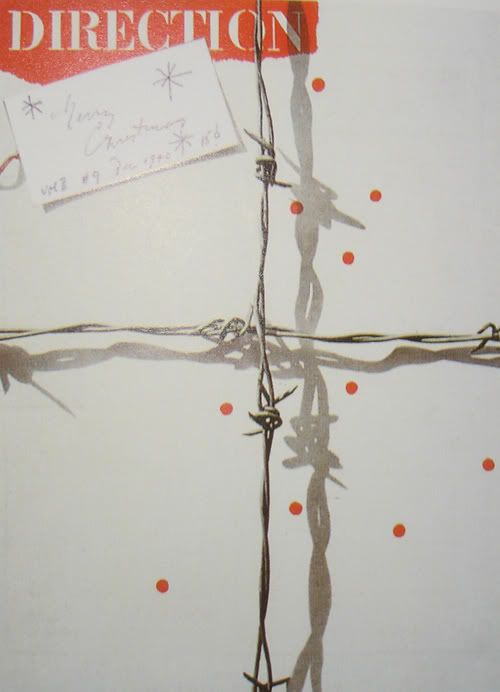Paul Rand
Paul Rand was an American designer, which was initiated the Ameriican approach to modern design more than any other designers. He started his career as graphic design as a promotional and editorial designer for the magazines Apparel Arts, Esquire, Ken, Coronet and Glass Packer. His work for magazine covers moved away from the traditions of American publication design. Through work of many designers in modern movement, such as Klee, Kandinsky, the cubists, he started to understand that the freely shapes could have a self-contained life, both symbolic and expressive, as a visual-communications tool. He has great ability to manipulate through visual forms such as shapes, colors, space, line, value and skillful analysis of communications content, reducing it to a symbolic essence without make it sterile or dull, conceded him to become widely influential. He was just twenty years old then. Everything that was visually dynamic and unexpected often was in his work.
A Direction magazine cover shows the important role of visual and symbolic contrast in Rand's designs. He put a handwritten Christmas tag on a crisp rectangle which changes the mechanical lettering of the logo on a torn-edged collage element. He was seizing upon collage and montage as means to bring concepts, images, textures, and even objects into a cohesive whole.
1941 until 1954 he applied his design approach at the Weintraub advertising agency. He was working with copywriter Bill Bernbach. Their work were prototype for the new uniwuitous art/copy team. Campaigns they created for clients, were featuring entertaining puns and wordplay supported by Rands's whimsical integration of photography, drawing, and logo. After leaving this agency Paul Rand became an independent designer with increasing emphasis on trademark and corporate design. His work inspired a generation of designers.
He was highly influenced by the designers Paul Klee and Moholy Nagy. He explored the formal vocabulary of the European aventgrade movements, cubism, constructivism and De Stijl. His sensual visual contrasts marked his work. He played red against green, organic shape against geometric type, photographic tone against flat color, cut or torn edges against sharp forms, and the textural pattern of type against white.
References:
Inkling for Web. 2014. Inkling for Web. [ONLINE] Available at:https://www.inkling.com/read/history-of-graphic-design-philip-meggs-5th/chapter-19/pioneers-of-the-new-york-school. [Accessed 08 January 2014].





No comments:
Post a Comment